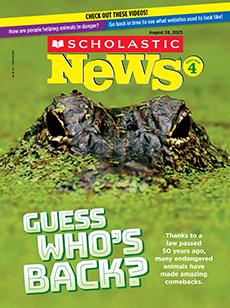Sunlight shimmers on the river. The scent of fry bread floats through the air. The sounds of drums and singing echo across a grassy field. Welcome to the Nansemond Indian Nation’s annual powwow.
Powwows are gatherings where Native American peoples come together to celebrate their cultures. At a powwow, people dance, sing, eat, and tell stories with family and friends.
The Nansemond have hosted a powwow on the same site in Virginia for more than 30 years. It’s a sacred place where their ancestors once lived.
This August, the powwow and the site felt more joyful than ever. That’s because earlier this year, the land was returned to the Nansemond Indian Nation.
The sun shines on the river. The smell of fry bread floats through the air. The sounds of drums and singing echo across a field. Welcome to the Nansemond Indian Nation’s yearly powwow.
Powwows are gatherings. They are where Native American peoples meet to celebrate their cultures. At a powwow, people dance, sing, eat, and tell stories with family and friends.
The Nansemond have held a powwow on the same site in Virginia for more than 30 years. It’s a sacred place. Their ancestor once lived there.
This August, the powwow and the site felt more joyful than ever. That’s because earlier this year, the land was returned to the Nansemond Indian Nation.

